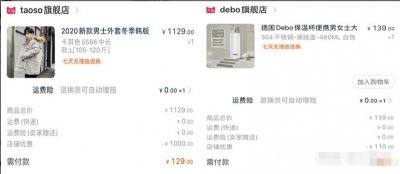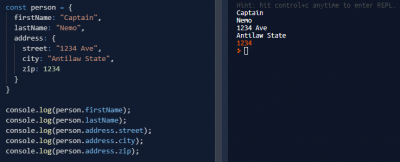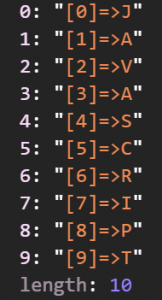又到了更新博客的时间了,今天给大家带来的是ListView侧滑出现删除等按钮的效果。相信大家在平时玩app的时候都接触过这种效果吧。比如说QQ聊天列表侧滑就会出现“置顶”、“标为已读”、“删除”等按钮。这篇博文将用ViewDragHelper这个神器来实现侧滑效果。
好了,话说的那么多,先来看看我们实现的效果图吧:

可以看出来,我们实现的和QQ的效果相差无几。下面就是源码时间了。
先来看一下ListView的item的slip_item_layout.xml:
<?xml version="1.0" encoding="utf-8"?>
<com.yuqirong.swipelistview.view.SwipeListLayout xmlns:android="http://schemas.android.com/apk/res/android"
android:id="@+id/sll_main"
android:layout_width="match_parent"
android:layout_height="wrap_content" >
<LinearLayout
android:layout_width="wrap_content"
android:layout_height="match_parent"
android:layout_gravity="center_vertical"
android:orientation="horizontal" >
<TextView
android:id="@+id/tv_top"
android:layout_width="80dp"
android:layout_height="match_parent"
android:background="#66ff0000"
android:gravity="center"
android:text="置顶" />
<TextView
android:id="@+id/tv_delete"
android:layout_width="80dp"
android:layout_height="match_parent"
android:background="#330000ff"
android:gravity="center"
android:text="删除" />
</LinearLayout>
<LinearLayout
android:layout_width="match_parent"
android:layout_height="match_parent"
android:layout_gravity="center_vertical"
android:background="#66ffffff"
android:orientation="horizontal" >
<ImageView
android:layout_width="wrap_content"
android:layout_height="match_parent"
android:layout_margin="10dp"
android:src="@drawable/head_1" />
<TextView
android:id="@+id/tv_name"
android:layout_width="wrap_content"
android:layout_height="match_parent"
android:layout_marginLeft="10dp"
android:gravity="center_vertical"
android:text="hello" />
</LinearLayout>
</com.yuqirong.swipelistview.view.SwipeListLayout>
我们可以看出,要先把侧滑出的按钮布局放在SwipeListLayout的第一层,而item的布局放在第二层。还有一点要注意的是,侧滑出的按钮如果有两个或两个以上,那么必须用ViewGroup作为父布局。要整体保持SwipeListLayout的直接子View为2个。
而activity的布局文件里就是一个ListView,这里就不再给出了。
下面我们直接来看看SwipeListLayout的内容:
public SwipeListLayout(Context context) {
this(context, null);
}
public SwipeListLayout(Context context, AttributeSet attrs) {
super(context, attrs);
mDragHelper = ViewDragHelper.create(this, callback);
}
// ViewDragHelper的回调
Callback callback = new Callback() {
@Override
public boolean tryCaptureView(View view, int arg1) {
return view == itemView;
}
@Override
public int clampViewPositionHorizontal(View child, int left, int dx) {
if (child == itemView) {
if (left > 0) {
return 0;
} else {
left = Math.max(left, -hiddenViewWidth);
return left;
}
}
return 0;
}
@Override
public int getViewHorizontalDragRange(View child) {
return hiddenViewWidth;
}
@Override
public void onViewPositionChanged(View changedView, int left, int top,
int dx, int dy) {
if (itemView == changedView) {
hiddenView.offsetLeftAndRight(dx);
}
// 有时候滑动很快的话 会出现隐藏按钮的linearlayout没有绘制的问题
// 为了确保绘制成功 调用 invalidate
invalidate();
}
public void onViewReleased(View releasedChild, float xvel, float yvel) {
// 向右滑xvel为正 向左滑xvel为负
if (releasedChild == itemView) {
if (xvel == 0
&& Math.abs(itemView.getLeft()) > hiddenViewWidth / 2.0f) {
open(smooth);
} else if (xvel < 0) {
open(smooth);
} else {
close(smooth);
}
}
}
};
我们主要来看callback,首先在tryCaptureView(View view, int arg1)里设置了只有是itemView的时候才能被捕获,也就是说当你去滑动“删除”、“置顶”等按钮的时候,侧滑按钮是不会被关闭的,因为根本就没捕获。(当然你也可以设置都捕获,那样的话下面的逻辑要调整了),剩余的几个函数中的逻辑较为简单,在onView Released(View releasedChild, float xvel, float yvel)也是判断了当手指抬起时itemView所处的位置。如果向左滑或者停止滑动时按钮已经显示出1/2的宽度,则打开;其余情况下都将关闭按钮。
以下分别是close()和open()的方法:
/**
* 侧滑关闭
*
* @param smooth
* 为true则有平滑的过渡动画
*/
private void close(boolean smooth) {
preStatus = status;
status = Status.Close;
if (smooth) {
if (mDragHelper.smoothSlideViewTo(itemView, 0, 0)) {
if (listener != null) {
Log.i(TAG, "start close animation");
listener.onStartCloseAnimation();
}
ViewCompat.postInvalidateOnAnimation(this);
}
} else {
layout(status);
}
if (listener != null && preStatus == Status.Open) {
Log.i(TAG, "close");
listener.onStatusChanged(status);
}
}
/**
* 侧滑打开
*
* @param smooth
* 为true则有平滑的过渡动画
*/
private void open(boolean smooth) {
preStatus = status;
status = Status.Open;
if (smooth) {
if (mDragHelper.smoothSlideViewTo(itemView, -hiddenViewWidth, 0)) {
if (listener != null) {
Log.i(TAG, "start open animation");
listener.onStartOpenAnimation();
}
ViewCompat.postInvalidateOnAnimation(this);
}
} else {
layout(status);
}
if (listener != null && preStatus == Status.Close) {
Log.i(TAG, "open");
listener.onStatusChanged(status);
}
}
SwipeListLayout大致的代码就这些,相信对于熟悉ViewDragHelper的同学们来说应该是不成问题的。其实整体的逻辑和之前用ViewDragHelper来实现侧滑菜单大同小异。
顺便下面贴出SwipeListLayout的全部代码:
/**
* 侧滑Layout
*/
public class SwipeListLayout extends FrameLayout {
private View hiddenView;
private View itemView;
private int hiddenViewWidth;
private ViewDragHelper mDragHelper;
private int hiddenViewHeight;
private int itemWidth;
private int itemHeight;
private OnSwipeStatusListener listener;
private Status status = Status.Close;
private boolean smooth = true;
public static final String TAG = "SlipListLayout";
// 状态
public enum Status {
Open, Close
}
/**
* 设置侧滑状态
*
* @param status
* 状态 Open or Close
* @param smooth
* 若为true则有过渡动画,否则没有
*/
public void setStatus(Status status, boolean smooth) {
this.status = status;
if (status == Status.Open) {
open(smooth);
} else {
close(smooth);
}
}
public void setOnSwipeStatusListener(OnSwipeStatusListener listener) {
this.listener = listener;
}
/**
* 是否设置过渡动画
*
* @param smooth
*/
public void setSmooth(boolean smooth) {
this.smooth = smooth;
}
public interface OnSwipeStatusListener {
/**
* 当状态改变时回调
*
* @param status
*/
void onStatusChanged(Status status);
/**
* 开始执行Open动画
*/
void onStartCloseAnimation();
/**
* 开始执行Close动画
*/
void onStartOpenAnimation();
}
public SwipeListLayout(Context context) {
this(context, null);
}
public SwipeListLayout(Context context, AttributeSet attrs) {
super(context, attrs);
mDragHelper = ViewDragHelper.create(this, callback);
}
// ViewDragHelper的回调
Callback callback = new Callback() {
@Override
public boolean tryCaptureView(View view, int arg1) {
return view == itemView;
}
@Override
public int clampViewPositionHorizontal(View child, int left, int dx) {
if (child == itemView) {
if (left > 0) {
return 0;
} else {
left = Math.max(left, -hiddenViewWidth);
return left;
}
}
return 0;
}
@Override
public int getViewHorizontalDragRange(View child) {
return hiddenViewWidth;
}
@Override
public void onViewPositionChanged(View changedView, int left, int top,
int dx, int dy) {
if (itemView == changedView) {
hiddenView.offsetLeftAndRight(dx);
}
// 有时候滑动很快的话 会出现隐藏按钮的linearlayout没有绘制的问题
// 为了确保绘制成功 调用 invalidate
invalidate();
}
public void onViewReleased(View releasedChild, float xvel, float yvel) {
// 向右滑xvel为正 向左滑xvel为负
if (releasedChild == itemView) {
if (xvel == 0
&& Math.abs(itemView.getLeft()) > hiddenViewWidth / 2.0f) {
open(smooth);
} else if (xvel < 0) {
open(smooth);
} else {
close(smooth);
}
}
}
};
private Status preStatus = Status.Close;
/**
* 侧滑关闭
*
* @param smooth
* 为true则有平滑的过渡动画
*/
private void close(boolean smooth) {
preStatus = status;
status = Status.Close;
if (smooth) {
if (mDragHelper.smoothSlideViewTo(itemView, 0, 0)) {
if (listener != null) {
Log.i(TAG, "start close animation");
listener.onStartCloseAnimation();
}
ViewCompat.postInvalidateOnAnimation(this);
}
} else {
layout(status);
}
if (listener != null && preStatus == Status.Open) {
Log.i(TAG, "close");
listener.onStatusChanged(status);
}
}
/**
*
* @param status
*/
private void layout(Status status) {
if (status == Status.Close) {
hiddenView.layout(itemWidth, 0, itemWidth + hiddenViewWidth,
itemHeight);
itemView.layout(0, 0, itemWidth, itemHeight);
} else {
hiddenView.layout(itemWidth - hiddenViewWidth, 0, itemWidth,
itemHeight);
itemView.layout(-hiddenViewWidth, 0, itemWidth - hiddenViewWidth,
itemHeight);
}
}
/**
* 侧滑打开
*
* @param smooth
* 为true则有平滑的过渡动画
*/
private void open(boolean smooth) {
preStatus = status;
status = Status.Open;
if (smooth) {
if (mDragHelper.smoothSlideViewTo(itemView, -hiddenViewWidth, 0)) {
if (listener != null) {
Log.i(TAG, "start open animation");
listener.onStartOpenAnimation();
}
ViewCompat.postInvalidateOnAnimation(this);
}
} else {
layout(status);
}
if (listener != null && preStatus == Status.Close) {
Log.i(TAG, "open");
listener.onStatusChanged(status);
}
}
@Override
public void computeScroll() {
super.computeScroll();
// 开始执行动画
if (mDragHelper.continueSettling(true)) {
ViewCompat.postInvalidateOnAnimation(this);
}
}
// 让ViewDragHelper来处理触摸事件
public boolean onInterceptTouchEvent(MotionEvent ev) {
final int action = ev.getAction();
if (action == MotionEvent.ACTION_CANCEL) {
mDragHelper.cancel();
return false;
}
return mDragHelper.shouldInterceptTouchEvent(ev);
}
// 让ViewDragHelper来处理触摸事件
public boolean onTouchEvent(MotionEvent event) {
mDragHelper.processTouchEvent(event);
return true;
};
@Override
protected void onFinishInflate() {
super.onFinishInflate();
hiddenView = getChildAt(0); // 得到隐藏按钮的linearlayout
itemView = getChildAt(1); // 得到最上层的linearlayout
}
@Override
protected void onSizeChanged(int w, int h, int oldw, int oldh) {
super.onSizeChanged(w, h, oldw, oldh);
// 测量子View的长和宽
itemWidth = itemView.getMeasuredWidth();
itemHeight = itemView.getMeasuredHeight();
hiddenViewWidth = hiddenView.getMeasuredWidth();
hiddenViewHeight = hiddenView.getMeasuredHeight();
}
@Override
protected void onLayout(boolean changed, int left, int top, int right,
int bottom) {
layout(Status.Close);
}
}
Android用ListView如何实现侧滑删除效果
转载https://www.codesocang.com/appboke/36535.html
热门源码











